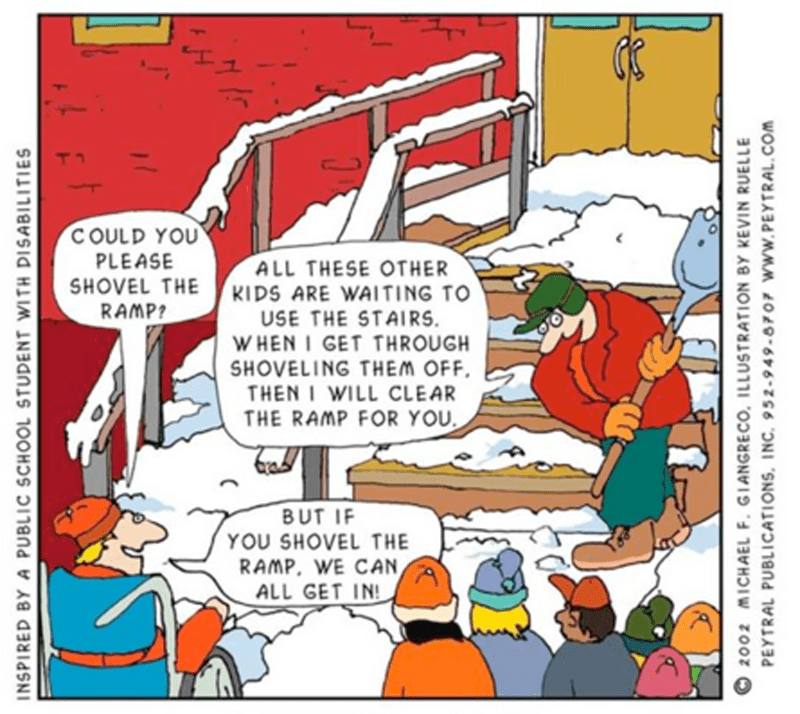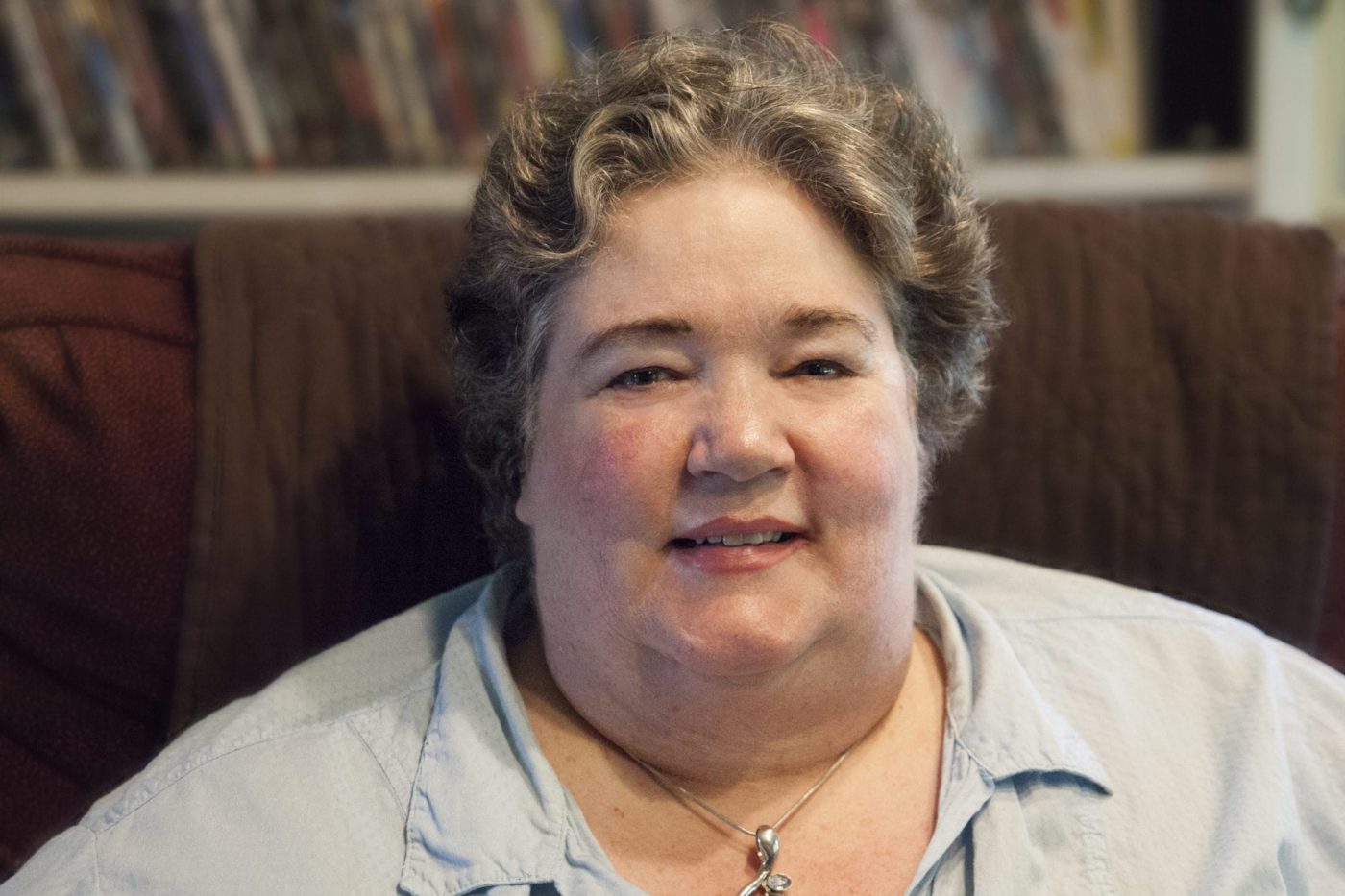Gail M. Burns has been part of WAM’s PR & Marketing Team since 2014. She has done remote work since 1988. In 2012 she became mobility challenged and has been housebound for several years now. She is pleased that remote work is becoming more and more mainstream and hopes we all continue to explore ways in which technology can make our workplaces and our entertainment opportunities more accessible.
DISCLAIMER: I am only one disabled person. What I speak here comes from my personal experience and understanding. I cannot and do not speak for all disabled people. I am one voice, not THE voice.
Love it or hate it, technology has brought many exciting changes to the disabled community who have access. (Equity in access to technology is a whole ‘nother kettle of fish!) The ability to order groceries, clothing, medications, entertainment, etc. online, as well as see and hear the people we are talking or meeting with is a great boon to people who are housebound or for whom getting out and around is an effort or requires assistance.
Then suddenly in March of 2020 the rest of the world joined the housebound community and discovered not only how important these technologies are, but how versatile and useful they are in many applications.
“You don’t look/sound disabled.” (My favorite – Not!) “There are only two or three steps up to our office.” (Great, are you going to lift my wheelchair up them?)
Although I have been housebound and working remotely for many years, until the lock down I knew that it was frowned upon and that remote workers were discriminated against, especially when it came to pay equity.
I first started working remotely when my children were school age. I had a window in my home office that looked out on our yard so my kids were either out there where I could see them or inside with me. It was a great relief to be able to do my writing and keep an eye/ear on them at the same time.
So when it became harder and harder for me to stand and walk and drive, I was already well-versed in remote work – and that was way before Zoom was invented!
But even with a clear physical need to work remotely, I felt the wariness and discrimination.
“You don’t look/sound disabled.” (My favorite – Not!) “There are only two or three steps up to our office.” (Great, are you going to lift my wheelchair up them?) “There’s a handicap ramp on the building.” (And yet the snow hasn’t been shoveled off of it and the door at the top is locked…) Able bodied people often do not see the accessibility issues that exist, or acknowledge that simply getting out of the house can be expensive and painful. Not to mention stressful. It is always stressful.
So COVID improved the employment opportunities for remote workers, and lo, employers discovered that people could be productive, communicate well, meet deadlines, etc. regardless of what zip code they were working from. Not only that, but they saved on renting, heating, and maintaining an office space and equipment. Handicapped workers could operate from an environment that was set up for their comfort and maneuverability. And people were so much less stressed without long commutes, high heels, and pantyhose!
I was especially excited to be able to join my WAM Teammates in attending workshops and conferences. Before everyone would pack their bags and fly off, then come back and say what a great experience they had and how they wished we all could have been there…well now we all can!
Disabled people ARE normal, now we need to normalize our thinking about disability.
But during these recent weeks, when the country was under the impression things were getting back to normal, enormous pressure was brought to bear on workers in many industries to return to the office, regardless of whether it was necessary or even fiscally prudent.
And while I watch ableism make its comeback, I likewise see fewer and fewer theatres offering opportunities to experience their productions remotely. Nothing has thrilled me more than the ability to see all kinds of different theatre from all over the country, generally at very affordable prices!
But streaming is NOT live theatre. As a theatre critic for 22 years I have refused to review digital offerings because I am not a film critic. The processes of lighting, directing, and shooting a production requires an entirely different skill set from the artists, skills I cannot critique because I have no understanding of them.
Given a choice between seeing a streaming or digital version and not seeing the show at all, I will always pick the former. I am excited to see the streaming version of Shakespeare & Company’s current production of KING LEAR, except – Oh Yikes! – I just realized I could be subjected to a close-up of Gloucester getting his eyes gouged out! Some things are better seen at a distance.
But I understand why theatres are offering fewer opportunities for remote viewing. They are theatre companies, not filmmakers, and acquiring the equipment and hiring the artists is expensive. Entirely different labor unions are involved which costs money and requires specialized negotiation skills. But having had a peek inside, it is sad for the disabled community to see that door slowly swinging shut again.
Accessibility advocates need to keep reminding businesses (and theatre is a business) the many advantages to continuing to expand and explore their accessibility options. We are paying customers, after all!
Disabled people ARE normal, now we need to normalize our thinking about disability.


